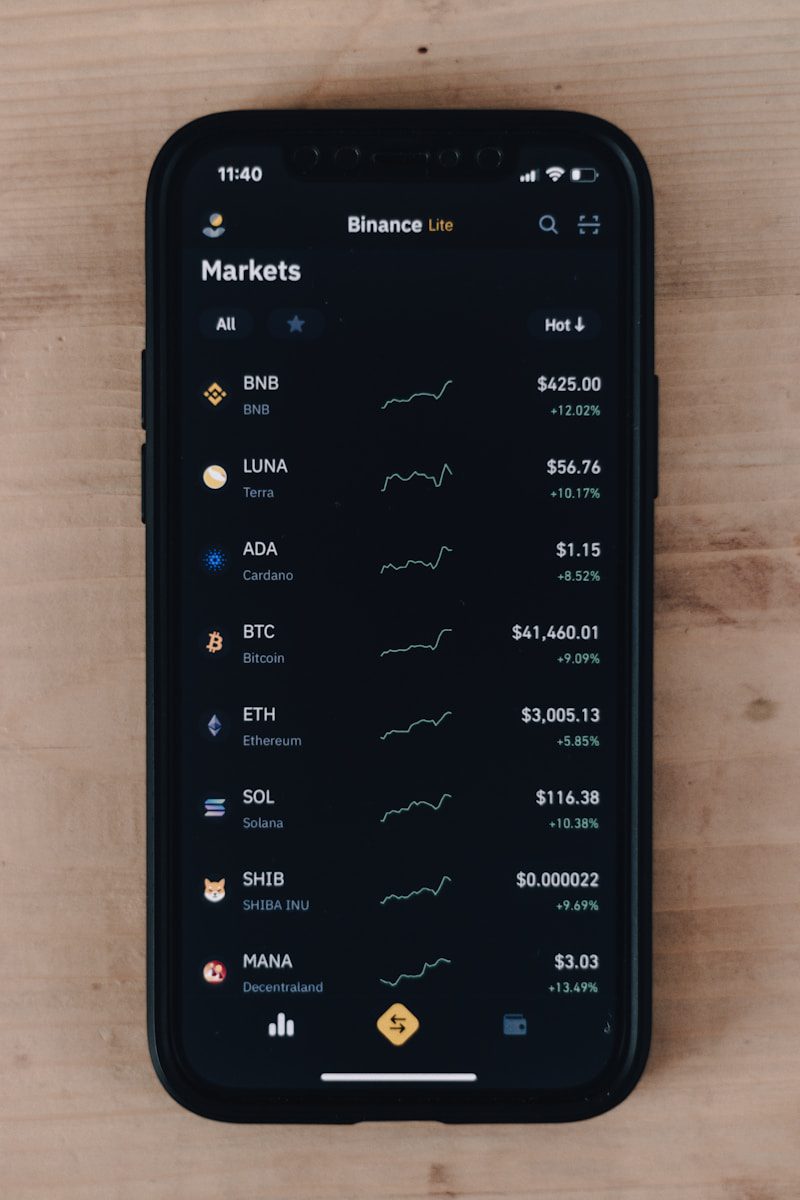
Flash loans explained

Uncollateralized borrowing within decentralized finance (DeFi) enables users to obtain assets without providing upfront security, a concept that challenges traditional lending norms. This unique mechanism allows the use of funds within a single transaction block, requiring repayment before the block closes to ensure risk-free execution for lenders.
The practical application of these rapid borrowings spans arbitrage opportunities, collateral swaps, and refinancing strategies. By leveraging atomicity–the all-or-nothing nature of blockchain transactions–users can perform complex sequences where borrowed capital is deployed and returned instantly if conditions are unmet.
Cases demonstrating this approach reveal both its power and vulnerabilities. For instance, the absence of collateral eliminates credit risk but demands precise timing and smart contract reliability. Understanding these factors clarifies how such mechanisms have expanded DeFi’s toolkit beyond conventional secured credit models.
Flash loans explained
Uncollateralized borrowing mechanisms in decentralized finance (DeFi) enable users to access significant capital within a single transaction without upfront guarantees. This unique feature allows executing complex operations such as arbitrage and collateral swaps that would be infeasible with traditional credit systems. Understanding the technical operation of these instant borrowings is critical for leveraging their advantages effectively while managing associated risks.
The core principle behind this technique involves borrowing an asset from a liquidity pool, utilizing it immediately, and repaying it all within one blockchain transaction. If the borrowed amount is not returned promptly, the entire transaction reverts, preventing any loss to the lender. This atomicity ensures secure utilization of funds without requiring prior collateral, distinguishing it from conventional lending models.
Technical Mechanisms and Use Cases
This financial instrument finds primary use in arbitrage opportunities across various decentralized exchanges (DEXs). Traders can exploit price discrepancies by acquiring assets cheaply on one platform and selling them at higher prices elsewhere, all within a single transaction block. Another application includes refinancing debt positions or swapping collateral types in lending protocols without exposing oneself to liquidation risk during transition.
- Arbitrage: Capturing price inefficiencies between DEXs by simultaneously buying low and selling high using borrowed capital.
- Collateral Swaps: Replacing one form of collateral with another in lending platforms instantly without closing existing positions.
- Self-liquidation: Preventing forced liquidation by repaying debts internally through borrowed funds before external actions occur.
The uncollateralized nature mandates execution within a single atomic operation enforced by smart contracts. This requires precise coding logic ensuring borrowed assets are either repaid or the whole procedure is nullified. The reliance on blockchain’s deterministic finality guarantees security for lenders despite the absence of upfront collateral.
Diverse experiments have demonstrated effective strategies beyond simple arbitrage–such as flash refinancing where users can shift loan terms instantly across protocols optimizing interest rates or risk profiles. These examples encourage exploration into automated market-making enhancements and dynamic portfolio adjustments leveraging instantaneous credit facilities.
A thorough grasp of these mechanisms demands familiarity with smart contract interactions, gas optimization techniques, and timing constraints inherent in blockchain environments. Investigating open-source repositories hosting modular implementations provides hands-on insights into structuring secure atomic transactions facilitating uncollateralized borrowing functionalities within DeFi ecosystems.
How Flash Borrowing Functions Within DeFi Ecosystems
Uncollateralized borrowing mechanisms in decentralized finance allow users to access substantial capital without prior asset backing, provided the entire transaction settles within a single blockchain block. This atomicity ensures that if any stage of the operation fails, all changes revert, maintaining system integrity and eliminating lender risk. Such instantaneous credit facilitates complex strategies like arbitrage, collateral swapping, or liquidation refinancing without upfront capital.
The process hinges on smart contracts capable of executing multiple interdependent actions seamlessly. Users initiate a borrowing request for a specified amount of cryptocurrency, utilize these funds within the same transaction–often to capitalize on price discrepancies across exchanges–and then repay the borrowed sum plus fees before the block concludes. Failure to return the capital triggers automatic reversion, nullifying all operations and protecting liquidity providers from losses.
Technical Breakdown of Instantaneous Unsecured Borrowing
This borrowing model operates exclusively on programmable protocols supporting atomic transactions, typically on Ethereum-compatible platforms. The absence of collateral differentiates it markedly from traditional lending; creditworthiness is replaced by transactional finality guarantees. Smart contracts orchestrate the loan lifecycle:
- Borrowing initiation: Funds are drawn from liquidity pools governed by decentralized protocols.
- Utilization phase: Borrowed assets execute predefined actions such as arbitrage trades or refinancing maneuvers.
- Repayment or rollback: Successful repayment releases funds back to lenders; failure invokes automatic transaction reversal.
This method exploits blockchain’s immutable ledger and consensus mechanics, enabling risk-free microcredit unavailable in conventional financial settings.
An illustrative case involves arbitrage: an operator might borrow large sums uncollateralized to purchase undervalued tokens on one platform and sell them at higher prices elsewhere within milliseconds. Profits cover borrowed amounts plus protocol fees. This seamless loop leverages temporary imbalances while preserving ecosystem stability via stringent atomic execution safeguards.
The use of such instantaneous credit lines has expanded beyond arbitrage into areas like collateral swaps in lending positions or refinancing debt obligations without asset liquidation delays. Experimental implementations also explore automated portfolio rebalancing using these tools, demonstrating their versatility within DeFi environments.
The reliance on strict atomicity and immediate settlement defines this borrowing modality’s security model and operational constraints. Users must engineer their transactions carefully; partial success is impossible due to built-in fail-safes ensuring systemic soundness amidst high-speed capital flows within decentralized finance platforms.
Use cases in DeFi
Uncollateralized borrowing mechanisms have become a vital tool within decentralized finance, enabling users to access capital without traditional guarantees. These instant debt instruments leverage atomic transactions on blockchain platforms, ensuring that the borrowed amount is repaid within a single operation block; failure to do so results in automatic reversal. This characteristic eliminates credit risk and opens possibilities for complex financial strategies executed programmatically.
One prominent application involves arbitrage opportunities across multiple decentralized exchanges. Traders can momentarily obtain substantial funds to exploit price discrepancies between tokens, repaying the borrowed sum immediately after executing trades that yield profit. Such operations rely on rapid execution and smart contract orchestration, demonstrating how instantaneous borrowing supports efficient market functioning without upfront collateral.
Technical use cases and experimentation
Another significant use case is collateral swapping, where participants exchange their existing locked assets for different types of collateral within lending protocols without needing additional liquidity. By temporarily acquiring funds through this mechanism, they repay previous debts and adjust their positions seamlessly within one transaction cycle. This technique enhances portfolio flexibility and risk management in decentralized lending ecosystems.
Liquidation protection strategies also benefit from these uncollateralized credit tools. Users can intervene to prevent forced asset sales triggered by under-collateralization by injecting temporary liquidity that covers shortfalls during volatile market conditions. Developers have experimented with automated bots utilizing these capabilities to stabilize lending pools effectively, showcasing an innovative approach to maintaining system health while minimizing liquidation cascades.
Risks and Limitations of Unsecured Instant Credit in DeFi
Utilizing uncollateralized credit that must be repaid within a single transaction block carries inherent risks primarily related to transaction failure and market volatility. The atomic nature of these transactions means that if the borrowed assets are not returned immediately, the entire operation reverts, which limits exposure but also constrains use cases strictly to opportunities executable within one blockchain block. This constraint restricts applications predominantly to arbitrage strategies or rapid refinancing actions.
The absence of collateral eliminates traditional safeguards against borrower default, shifting risk management onto smart contract logic and blockchain consensus mechanisms. While this design facilitates permissionless access to liquidity, it also opens avenues for exploitation. For example, attackers can manipulate decentralized exchange prices through oracle attacks or flash manipulations, profiting from temporarily distorted asset valuations before repayment occurs.
Technical and Economic Barriers in Decentralized Finance Use Cases
Protocols offering instant uncollateralized borrowing often impose strict conditions on execution flow to minimize systemic risk. These include gas price requirements, transaction ordering dependencies, and atomicity guarantees enforced by the underlying virtual machine. Yet, these constraints lead to high operational complexity and increased costs during network congestion periods. Users must carefully consider gas fees versus potential profit margins when engaging in arbitrage or liquidation scenarios.
- Arbitrage Limitations: Rapid market inefficiencies exploited via these instruments require highly optimized algorithms and real-time data feeds. Latency in blockchain confirmation or oracle updates can result in failed attempts or losses.
- Smart Contract Vulnerabilities: Bugs or logical errors in protocol code may be exploited during the brief unsecured period, causing significant financial damage or draining liquidity pools.
Empirical studies have shown that while such mechanisms democratize access to capital for sophisticated traders and developers, they also concentrate risk within certain DeFi platforms due to interconnected dependency chains. Complex interactions between lending protocols, automated market makers, and governance tokens create systemic vulnerabilities that require continuous auditing and adaptive security measures.
The niche applicability of this instantaneous credit model demands thorough understanding of both blockchain mechanics and economic incentives behind each interaction. Experimental approaches involving testnets and simulation tools provide valuable insights into performance under varying network conditions and adversarial scenarios. Researchers are encouraged to investigate cross-chain implementations as well as integration with emerging Layer-2 solutions to alleviate some limitations currently faced by mainnet environments.
A critical question remains: how might future protocol designs balance accessibility with security while expanding practical use beyond purely arbitrage-driven models? Exploring composability with other DeFi primitives could yield innovative strategies that harness this powerful mechanism without exposing participants to disproportionate risk. Continued interdisciplinary research combining cryptoeconomics, software engineering, and game theory is essential for evolving these decentralized financial instruments responsibly.
Step-by-step borrowing guide
To initiate a transaction involving instant credit within decentralized finance protocols, identify a platform supporting atomic operations that allow borrowing and repayment within a single block. Begin by specifying the asset type and amount required for the operation. The underlying mechanism mandates that all borrowed funds must be returned before the transaction finalizes; otherwise, the entire process reverts automatically.
Once parameters are set, construct a smart contract or utilize an existing interface capable of executing the sequence of actions combining borrowing, use, and repayment. Common practical cases include arbitrage opportunities where price discrepancies between exchanges enable profit without initial capital outlay. For instance, acquiring tokens on one exchange at a lower price and immediately selling them on another at higher rates can be orchestrated via this method.
Technical steps to complete an instant borrowing cycle
- Connect to DeFi protocol: Use wallets compatible with decentralized applications such as MetaMask or WalletConnect to interact with platforms like Aave or DyDx.
- Create transaction logic: Encode all intended operations–including token swaps or collateral deposits–within a single atomic transaction script to ensure sequential execution.
- Request funds: Initiate borrowing through the protocol’s lending pool smart contracts that verify immediate repayment feasibility.
- Implement use-case: Conduct trading strategies such as arbitrage by routing borrowed assets across multiple decentralized exchanges (DEXs) or liquidity pools.
- Repay within same block: Ensure sufficient funds from profits or other sources are available to settle the debt before block confirmation to prevent reversion.
A practical example involves utilizing price differences among Uniswap, SushiSwap, and Curve Finance pools. By programming token swaps that capitalize on these variations in real-time, users can execute profitable sequences without upfront capital risks. This approach highlights how atomic borrowing mechanisms expand possibilities beyond traditional collateralized credit lines.
The suitability of this model depends heavily on network fees and latency; high gas costs can erode margins significantly. Therefore, conducting simulations on testnets followed by meticulous gas estimation is advisable before deploying live strategies. Monitoring blockchain explorers for transaction success rates further informs adjustments in timing and parameter selection.
Conclusion on Popular Instant Borrowing Platforms
Uncollateralized borrowing mechanisms have transformed DeFi by enabling arbitrage and other sophisticated use cases within a single transaction. Platforms facilitating these rapid, trustless funds provide unparalleled access to capital, allowing users to exploit pricing inefficiencies without upfront collateral, thereby optimizing capital efficiency in decentralized ecosystems.
Examining specific cases reveals how such tools enable complex atomic operations like collateral swaps, liquidation refinancing, and multi-protocol arbitrage strategies. The underlying protocol designs emphasize instant execution and security guarantees, ensuring that if conditions are unmet, the entire operation reverts–preserving network integrity while unlocking new financial primitives.
Future Outlook and Technical Implications
- Protocol Evolution: Next-generation platforms will likely integrate cross-chain capabilities to extend uncollateralized borrowing beyond current single-chain limitations, fostering composability across heterogeneous blockchains.
- Risk Mitigation: Enhanced monitoring algorithms combined with on-chain analytics aim to detect exploit patterns early, reducing systemic vulnerabilities associated with rapid capital deployment.
- Regulatory Considerations: As decentralized protocols mature, compliance frameworks may influence design choices impacting permissionless borrowing dynamics without compromising censorship resistance.
- User Accessibility: Improved abstractions and user interfaces will lower barriers for non-expert participants to implement complex arbitrage or refinancing strategies effectively.
The continuous refinement of these instantaneous credit systems demonstrates their pivotal role in advancing DeFi’s composability and liquidity efficiency. Researchers and developers are encouraged to experimentally probe novel applications within this paradigm–such as algorithmic stablecoin stabilization or automated portfolio rebalancing–to fully harness the potential unlocked by uncollateralized, atomic asset utilization.


